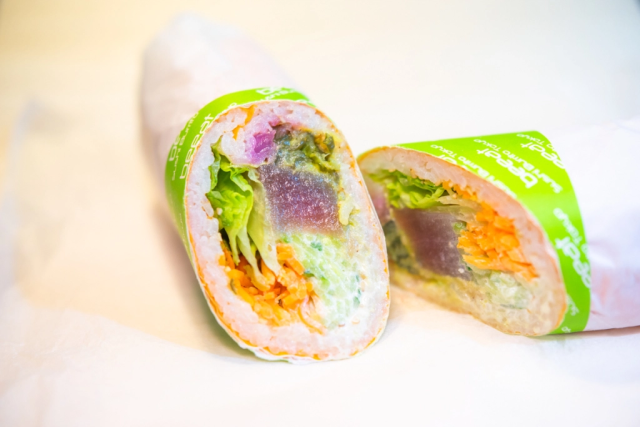
In the biggest sushi-loving town on the planet, can this unique twist on Japan’s food culture succeed?
In some ways, you could argue that Tokyo is the worst place on the planet to open a “sushi burrito” restaurant. Not only is it the capital of the country that created sushi culture, it’s also got the busiest fish market in the world in the Toyosu neighborhood, as well as the prestige of the many sushi restaurants still operating in Tsukiji, where the market was based until just a few months ago.
But on the other hand, you could argue that all will work to the advantage of Beeat, a sushi burrito specialist that just opened in Tokyo on November 30. After all, Tokyo is already packed with traditional sushi restaurants, and rather than compete with them directly, Beeat is offering diners something they can’t get anywhere else in the city.
So we decided to keep an open mind until we’d tried Beeat for ourselves. We sent our Japanese-language reporter Tasuku to do the taste-test honors, since he loves both orthodox sushi and burritos, and was curious to see how Beeat’s sushi burritos, which are really a new type of food rather than a subset of either of their linguistic components, taste.
https://twitter.com/fumitake1969/status/1067772151506202624It’s not just the food that makes Beeat unique, though. Located not far from Akihabara Station (and just down the street from the otaku hair salon we recently visited for a trim), Beeat boasts technological innovations as well. Customers who’re in a hurry can order and pay for their food online, and the restaurant has a futuristic design with numbered compartments where you pick up your meal. Even the pricing is high-tech, with an AI program setting how much the restaurant charges based on market prices for ingredients (prices tend to run between 780 and 1,300 yen [US$6.90 and $11.50] per burrito).
設計監理及び内装デザインを担当した『beeat – Sushi Burrito Tokyo –』が本日グランドオープンしました。簡単に言うと「日本初となる対面無人の寿司ブリトー専門店」です。キャッシュレスやモバイル決済など、近未来型飲食店テクノロジーのショールームでもあります。https://t.co/eHZWpemPDy pic.twitter.com/XUhTv6bRir
— 中郡大輔 (@DCAA_architects) November 30, 2018
▼ Tasuku’s boxed sushi burrito, with his name printed on the label.
Since it was his first visit, Tasuku decided to stuff himself by ordering three different sushi burritos, in order to sample as much of the menu as he possibly could. First up was the Magu Avo Tokyo Road, with top-billing going to its tuna (magura) and avocado.
Beeat’s sushi burritos come pre-cut to make them easier to eat, which also gets you a sneak peek at the ingredients rolled up in them. Along with a generous portion of tuna and avocado, Tasuku’s first course also had shredded carrots, lettuce and cucumber. That’s actually a lot more vegetables than you’d find in a traditional sushi roll, making the sushi burrito a pretty healthy and nutritious option in that regard.
Gourmands will tell you that the word “sushi” indicates not raw fish, but vinegared rice, which Beeat does indeed use as a thin layer, sprinkled with sesame seeds, around the core ingredients. The very outer wrapping isn’t a tortilla, like it would be in a normal burrito, but rather a sort of wrapping like a wanton skin.
Biting into the Magu Avo Tokyo Road, Tasuku discovered there was a slightly tart white sauce on the veggies, which was a little like mayonnaise. Each order at Beeat also comes with three sauces that you can add to taste. The teriyaki went well with the burrito, as did the salsa, but the wasabi sauce was far too spicy even for veteran wasabi-lover Tasuku, who quickly set it aside after it assaulted his tongue and sinuses with its fiery fury. As long as he wasn’t using the wasabi, though, the Magu Avo Tokyo Road was nicely balanced and tasty, with the tuna being of the same tasty quality he’d expect at reasonably priced dedicated sushi restaurants..
Next it was time for the Anago These Dreams.
This is almost exactly the same as the Magu Avo Tokyo Road, with the only differences being a different colored outer wrapping and replacing the tuna with anago (saltwater eel). Since anago is usually a pretty pricy ingredient, Takusu resigned himself to getting only a meager morsel of the expensive seafood, but a pre-tasting examination revealed a nice-sized chunk.
However, anago has a pretty mild flavor, and it wasn’t all that noticeable mixed in with so many other ingredients in the same bite. Things improved considerably when Tasuku added a dash of teriyaki, which is similar, thought not exactly the same as, the sweet sauce often added to the top of pieces of anago nigiri-style sushi.
Finally, to finish things off Tasuku opted for the Omar King of Kings, which seems to be named after the 2006 album from Puerto Rican reggaeton recording artist Don Omar.
The name didn’t really give Tasuku any clue as to what to expect on the ingredient list, and when he opened the box for the Omar King of Kings, he was still confused. There was no white sauce this time, and some shredded pickles had been added o the vegetable mix. But what was the orange thing, seen to the left of the cucumbers in this photo?
There was only one way to find out, so Tasuku took a bite, and as he chewed, he realized that it was a cream croquette which had been compacted and mashed in the burrito rolling process. Personally, he’d have preferred an uncrushed, if smaller, croquette, but once he knew what he was eating, it wasn’t bad.
So what’s Tasuku’s overall take on these sushi burritos? He thinks they’re all tasty, and as long as you don’t have any mental hang-up about the mixing of sushi and burritos (and also a loose definition of burrito, since there are no tortillas here), then you’ll probably enjoy them. “Are you the kind of person who’s OK with California rolls?” he asks. “If so, then yeah, they’re worth trying” (Tasuku himself is a huge California roll fan).
However, if you’re after an authentic sushi experience, sushi burritos probably won’t scratch that itch. Because of that, the Akihabara location gives Beeat an uphill road to success, since the large number of foreign tourists who flood the otaku mecca on a daily basis are primarily there because of a love of Japanese things, and they might find the idea of sushi burritos a little watered-down or weird (or even chu to hampa, to use a Japanese term). On the other hand, these days Akihabara also draws plenty of Japanese travelers and day trippers too, and they might be craving something offbeat before heading back to their hometowns (which also will have plenty of plain old ordinary sushi restaurants), so maybe they’re the ones who’ll ultimately decided whether Beeat keeps going strong.
Restaurant information
beeat Sushi Burrito Tokyo /
Address: Tokyo-to, Chiyoda-ku, Soto Kanda 5-6-2
東京都千代田区外神田5-6-2
Open 11 a.m.-3 p.m.
Website
Photos ©SoraNews24
[ Read in Japanese ]

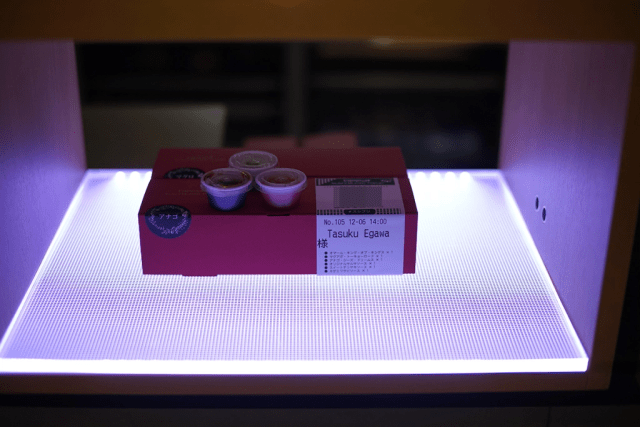
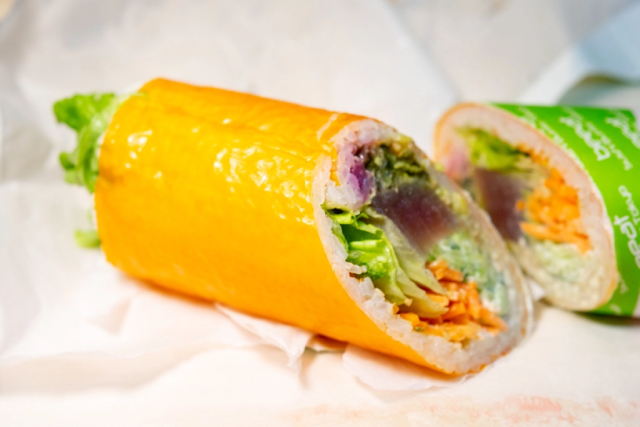
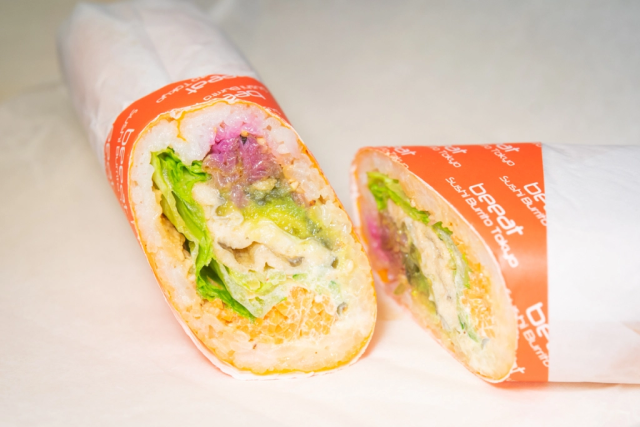
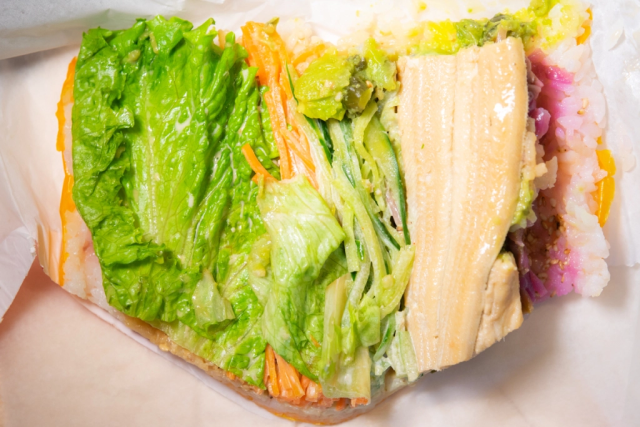

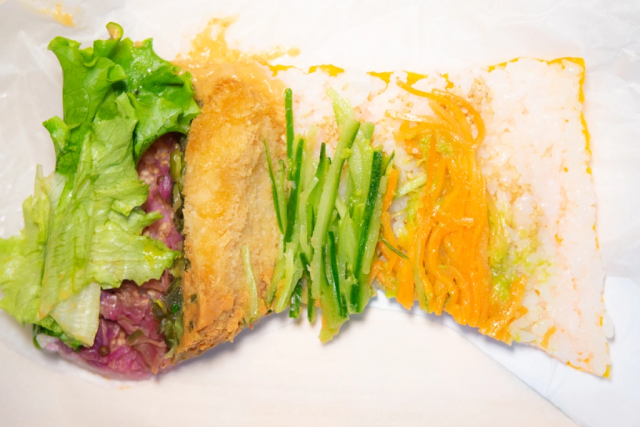
 Starbucks starts selling sushi in America, calls it a “burrito” and “sandwich” for some reason
Starbucks starts selling sushi in America, calls it a “burrito” and “sandwich” for some reason We taste-test 7-Eleven’s new fusion cuisine: the Cheese Dak-galbi Burrito!
We taste-test 7-Eleven’s new fusion cuisine: the Cheese Dak-galbi Burrito! How to pick out the best anago eel and other things we learned at the anago processing center
How to pick out the best anago eel and other things we learned at the anago processing center Which Japanese conveyor belt sushi chain has the best saltwater eel sushi?【Taste test】
Which Japanese conveyor belt sushi chain has the best saltwater eel sushi?【Taste test】 Who’s got the best, cheapest one-person sushi delivery in downtown Tokyo? Mr. Sato investigates!
Who’s got the best, cheapest one-person sushi delivery in downtown Tokyo? Mr. Sato investigates! How to order snacks on a Shinkansen bullet train in Japan
How to order snacks on a Shinkansen bullet train in Japan Japan’s new difficult-to-drink-from beer glass protects your liver, but it’s a brutal experience
Japan’s new difficult-to-drink-from beer glass protects your liver, but it’s a brutal experience Demon Slayer: Kimetsu no Yaiba gets new roller coaster attractions and food at Universal Studios Japan
Demon Slayer: Kimetsu no Yaiba gets new roller coaster attractions and food at Universal Studios Japan Burger King Japan suddenly adds Dr. Pepper and Dr. Pepper floats to its menu nationwide
Burger King Japan suddenly adds Dr. Pepper and Dr. Pepper floats to its menu nationwide New Pokémon ice cream, dessert drinks, and cool merch coming to Baskin-Robbins Japan【Pics】
New Pokémon ice cream, dessert drinks, and cool merch coming to Baskin-Robbins Japan【Pics】 New Nintendo Lego kit is a beautiful piece of moving pixel art of Mario and Yoshi【Photos】
New Nintendo Lego kit is a beautiful piece of moving pixel art of Mario and Yoshi【Photos】 New samurai glasses are Japan’s latest weird must-have souvenir
New samurai glasses are Japan’s latest weird must-have souvenir Kyoto Tower mascot termination reveals dark side behind cute Japanese characters
Kyoto Tower mascot termination reveals dark side behind cute Japanese characters Hello, cosmetics! Clinique teams up with Hello Kitty this summer for first-time collaboration
Hello, cosmetics! Clinique teams up with Hello Kitty this summer for first-time collaboration This Nara workshop has been making deer crackers for more than 100 years and offers tours【Photos】
This Nara workshop has been making deer crackers for more than 100 years and offers tours【Photos】 Nintendo history you can feel – Super NES, N64, and GameCube controllers become capsule toys
Nintendo history you can feel – Super NES, N64, and GameCube controllers become capsule toys “The most Delicious Cup Noodle in history” – Japan’s French Cup Noodle wins our heart【Taste test】
“The most Delicious Cup Noodle in history” – Japan’s French Cup Noodle wins our heart【Taste test】 Starbucks releases a cute Frappuccino and Unicorn Cake…but not in Japan
Starbucks releases a cute Frappuccino and Unicorn Cake…but not in Japan McDonald’s Japan’s Soft Twist Tower: A phantom ice cream only sold at select branches
McDonald’s Japan’s Soft Twist Tower: A phantom ice cream only sold at select branches Yabai Ramen: What makes this Japanese ramen so dangerous?
Yabai Ramen: What makes this Japanese ramen so dangerous? Finally! Nintendo Japan expands Switch 8-bit controller sales to everybody, Online member or not
Finally! Nintendo Japan expands Switch 8-bit controller sales to everybody, Online member or not Japanese government wants to build luxury resorts in all national parks for foreign tourists
Japanese government wants to build luxury resorts in all national parks for foreign tourists To combat declining birth rate, Japan to begin offering “Breeding Visas” to foreigners
To combat declining birth rate, Japan to begin offering “Breeding Visas” to foreigners 10 things you should buy at 7-Eleven in Japan
10 things you should buy at 7-Eleven in Japan Studio Ghibli releases anime heroine cosplay dresses that are super comfy to wear
Studio Ghibli releases anime heroine cosplay dresses that are super comfy to wear Woman charged for driving suitcase without a license in Osaka
Woman charged for driving suitcase without a license in Osaka Studio Ghibli unveils My Neighbour Totoro miniature house model
Studio Ghibli unveils My Neighbour Totoro miniature house model Kyoto experiencing problems with foreign tourists not paying for bus fares, but not on purpose
Kyoto experiencing problems with foreign tourists not paying for bus fares, but not on purpose Fighting mild hunger with a Japanese soda that turns into jelly in the stomach【Taste test】
Fighting mild hunger with a Japanese soda that turns into jelly in the stomach【Taste test】 Studio Ghibli’s Howl’s Moving Castle tapestry unveiled in Japan for first time
Studio Ghibli’s Howl’s Moving Castle tapestry unveiled in Japan for first time McDonald’s new Happy Meals offer up cute and practical Sanrio lifestyle goods
McDonald’s new Happy Meals offer up cute and practical Sanrio lifestyle goods Sales of Japan’s most convenient train ticket/shopping payment cards suspended indefinitely
Sales of Japan’s most convenient train ticket/shopping payment cards suspended indefinitely Sold-out Studio Ghibli desktop humidifiers are back so Totoro can help you through the dry season
Sold-out Studio Ghibli desktop humidifiers are back so Totoro can help you through the dry season Japanese government to make first change to romanization spelling rules since the 1950s
Japanese government to make first change to romanization spelling rules since the 1950s Foreigner’s request for help in Tokyo makes us sad for the state of society
Foreigner’s request for help in Tokyo makes us sad for the state of society Ghibli founders Toshio Suzuki and Hayao Miyazaki contribute to Japanese whisky Totoro label design
Ghibli founders Toshio Suzuki and Hayao Miyazaki contribute to Japanese whisky Totoro label design Doraemon found buried at sea as scene from 1993 anime becomes real life【Photos】
Doraemon found buried at sea as scene from 1993 anime becomes real life【Photos】 Tokyo’s most famous Starbucks is closed
Tokyo’s most famous Starbucks is closed Princesses, fruits, and blacksmiths: Study reveals the 30 most unusual family names in Japan
Princesses, fruits, and blacksmiths: Study reveals the 30 most unusual family names in Japan Japan super budget dining – What’s the best way to spend 1,000 yen at sushi restaurant Sushiro?
Japan super budget dining – What’s the best way to spend 1,000 yen at sushi restaurant Sushiro? Supermarket sushi becomes a hot topic with foreigners on Reddit, but is it any good?
Supermarket sushi becomes a hot topic with foreigners on Reddit, but is it any good? We try vegetarian sushi at Tokyo’s newest sushi train restaurant 【Pics & Taste Test】
We try vegetarian sushi at Tokyo’s newest sushi train restaurant 【Pics & Taste Test】 A collection of 20 creative ‘sushi’ rolls that were invented outside of Japan
A collection of 20 creative ‘sushi’ rolls that were invented outside of Japan Can’t go to conveyor belt sushi? Major Japanese chain will bring the conveyor belt to you!
Can’t go to conveyor belt sushi? Major Japanese chain will bring the conveyor belt to you! We fall in love with a bucket of Japanese custard pudding【Taste test】
We fall in love with a bucket of Japanese custard pudding【Taste test】 Tokyo Station’s second-most popular bento is great because of what it isn’t【Taste test】
Tokyo Station’s second-most popular bento is great because of what it isn’t【Taste test】 Japanese restaurant sears sushi with a soldering iron【Video】
Japanese restaurant sears sushi with a soldering iron【Video】 Trying out First Kitchen’s tsukimi mochi burgers for a taste of Japanese autumn
Trying out First Kitchen’s tsukimi mochi burgers for a taste of Japanese autumn Japan develops special sushi for pregnant women
Japan develops special sushi for pregnant women Japan’s oldest sushi train serves up unorthodox Blueberry Cream Sushi
Japan’s oldest sushi train serves up unorthodox Blueberry Cream Sushi Which Japanese conveyor belt sushi chain has the best hamburger steak sushi?【Taste test】
Which Japanese conveyor belt sushi chain has the best hamburger steak sushi?【Taste test】 Norigami Tacos combines sushi and tacos into one crunchy culinary coupling【Pics】
Norigami Tacos combines sushi and tacos into one crunchy culinary coupling【Pics】 Tokyo restaurant offers “DIY Tempura Bowls,” so of course we had to go check it out
Tokyo restaurant offers “DIY Tempura Bowls,” so of course we had to go check it out We travel across the city like royalty — Hiroshima streetcar turns into fancy, private dining area
We travel across the city like royalty — Hiroshima streetcar turns into fancy, private dining area
Leave a Reply